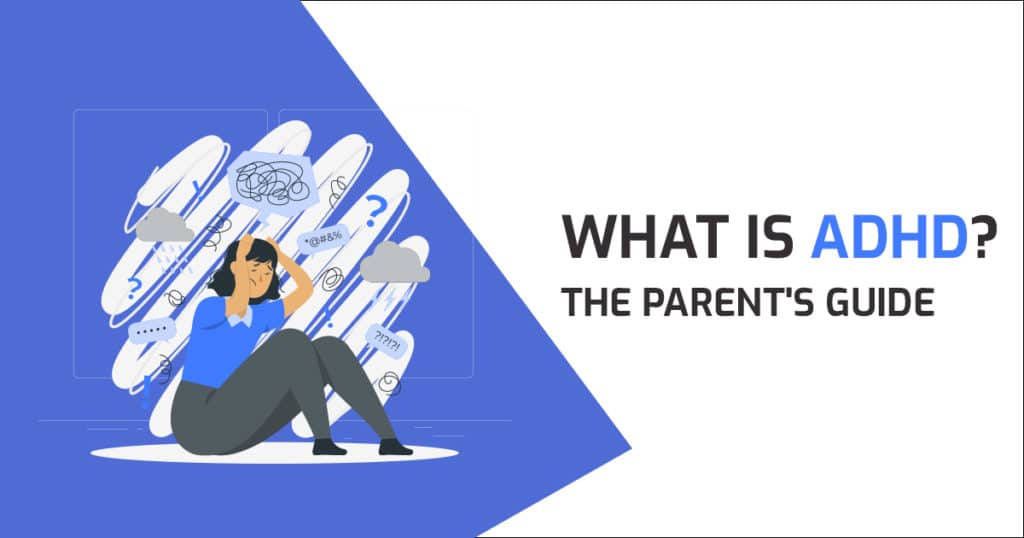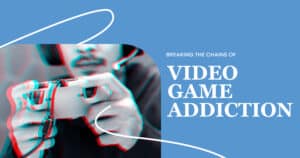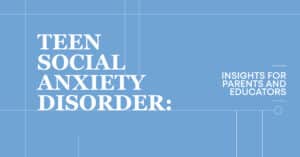Attention-Deficit/Hyperactivity Disorder (often referred to as ADHD) is a common medical condition that is known to impact a person’s ability to focus, control impulses, and may also cause hyperactive behavior.
This post will serve as a caregiver’s guide to answering frequently asked questions: “What is ADHD?” “What are the different types of ADHD?” and “What are common symptoms and treatments for ADHD?”
What is ADHD?
According to Children and Adults with Attention-Deficit/Hyperactivity Disorder (CHADD), this condition, which impacts both men and women, “is a neurodevelopmental disorder affecting 11 percent of school-age children. Symptoms continue into adulthood in more than three-quarters of cases. ADHD is characterized by developmentally inappropriate levels of inattention, impulsivity, and hyperactivity.”
CHADD also states that people with ADHD can live very successful lives, especially those who implement proper treatments, social skills training, and interventions. Early identification and adequate support can decrease the risk of potential adverse outcomes such as school failure, family stress, depression, strained relationships, substance abuse, delinquency, accidental injuries, and even job difficulties.
Hillside Horizon
How is a Diagnosis for ADHD Determined?
While we most often diagnose the disorder in childhood (in some as early as preschool), we can also find adults with ADHD. However, obtaining a diagnosis isn’t always clear-cut or straightforward — particularly in children because they can often exhibit signs of inattention or impulsivity based solely on their age and development.
Additionally, the disorder tends to be underdiagnosed in girls because their symptoms are often misidentified as being caused by something else, like anxiety or depression. Therefore, doctors must conduct a thorough review to rule out other possibilities before giving a formal determination.
A comprehensive assessment for children may include interviews with their parents/guardians, school staff, coaches, and the child themselves. In adults, the patient, their family members, and other medical professionals may also offer input. A doctor will want to find out if the individual presents common symptoms and patterns of behavior in multiple settings, i.e., home, social, educational, or workplace, etc.
Additionally, healthcare providers will want to rule out if symptoms could be caused by another condition altogether (one that may be behavioral, physical, or developmental in nature) or perhaps in conjunction with ADHD. They do this because it is possible for it to coexist with another condition. For example, a person may have a dual diagnosis of ADHD and Autism Spectrum Disorder (ASD.)
Finally, medical professionals will use the Diagnostic and Statistical Manual of Mental Disorders-5th Edition (DSM-5), the American Psychiatric Association’s (APA) standard assessment tool to determine if an individual fits the criteria for a diagnosis.
What are the Types of ADHD?
According to the DSM-5, symptoms are divided into two categories: inattentive type and combined hyperactive/impulsive type. In order to receive a diagnosis, several symptoms must be present by the age of 12. Symptoms must also substantially interfere with the person’s life, i.e., struggling in school, maintaining relationships, etc. In addition, individuals under the age of 17 should have six or more symptoms present. Anyone over that age should present with at least five symptoms.
It is important to note that symptoms can vary from person to person and range in severity. They may also change based on the environment or setting. Symptoms can even differ depending on age or gender. For example, hyperactivity in children may present as restlessness in adults.
Hillside Horizon
What are the Symptoms of ADHD?
The APA specifies three different presentations of this condition: predominantly inattentive, hyperactive-impulsive, and combined type. These are the common symptoms of each which have been summarized using the DSM-5.
1. An individual with predominantly inattentive presentation will likely:
- Have difficulty paying attention for long periods and avoid or dislike tasks that require sustained effort or attention
- Lack attention to detail and make careless mistakes
- Exhibit poor organizational skills, lose things necessary to complete tasks and activities, fail to follow through on tasks, and have difficulty following directions
- Be easily distracted, forgetful, and may appear not to listen when spoken to directly
2. An individual with predominantly hyperactive-impulsive presentation will likely:
- Exhibit behaviors like fidgeting, tapping hands or feet, and squirming in their seat (they may even leave their chair when staying seated is expected)
- Act as if they are “driven by motor,” making it difficult to engage in quiet or leisurely activities
- Talk excessively, blurt out answers, and interrupt others
- Have difficulty waiting their turn
3. An individual with combined presentation:
- Matches criteria for both inattentive and hyperactive-impulsive presentations.
Treatment Options for ADHD
Caregivers may wonder what types of treatment options and support is available for their child since there is no cure for ADHD. Fortunately, there are many medicinal and non-medicinal options to help individuals manage this condition. A collaboration of the child’s caregivers, school staff, and doctor will generally determine an effective approach to treatment. A treatment plan can include all or some of the following:
- Parental Training and Education: classes to learn more about ADHD and its treatments as well as behavior management techniques
- Behavioral Therapy: Your child to learn strategies to minimize negative behaviors, enhance self-regulation and self-esteem, as well as learn new skills
- Prescription ADHD Medications: Medication given by a doctor should be regularly monitored and assessed to ensure proper dosage and long term effectiveness
- Educational Interventions: Involvement from the child school allows the opportunity to create an Individual Education Program (IEP), 504 Plan, and additional tutoring
- Mental Health Counseling: Counseling and support groups for the child and family members to cope with struggles as they arise
What Can Be Done at Home?
5 simple tips for creating a positive home environment for your child diagnosed with ADHD include:
- Establish a Routine: Maintain a consistent schedule each day. Keep a written or visual schedule to share with your child, so they know what to expect throughout their day. Make sure to prep your child in advance of schedule changes that might occur.
- Encourage Exercise and Gross-Motor Time: Make sure your child has ample opportunities to participate in indoor and outdoor physical activity every day. Periods of movement are effective ways to release energy and provide breaks from strenuous tasks.
- Create a Quiet and Organized Workspace: Set up an area of your home, with limited distractions, specifically for your child to complete their school work. This space should include all of the items your child needs to complete their assignments (textbooks, pens, notebooks, etc.) It should also be kept organized with visual, written, or physical cues to help make it simpler to complete tasks, locate items, and clean up afterward.
- Make large tasks more manageable: Children with ADHD may have difficulty with tasks that require sustained time and effort. Therefore, dividing large tasks into smaller, more manageable parts is more effective. Take each task one step at a time, taking breaks if necessary.
- Set clear ground rules and expectations: Be clear and consistent with easy-to-understand rules and consequences so that your child knows what is expected. Use specific language when giving directions, i.e., “put your clothes in the hamper” instead of “could you clean up your clothes?” Additionally, give praise and/or rewards when rules are followed to reinforce positive behaviors.
In conclusion, having a child with ADHD may come with unique challenges. But caregivers need to know that this condition can be well-managed. Families must also understand that they are not alone in this process and should seek guidance from their child’s doctor and school staff when necessary. Finally, it’s critical to remember that proper treatments, interventions, and behavior strategies can help children thrive at home, in school, and life.
Hillside Horizon
Getting Help with ADHD for Kids
Kids with ADHD that find the right combination of medication, diet, stimulation, and behavioral training will be able to live a very rewarding and fulfilling life without feeling held down by their diagnosis. Hillside Horizon for Teens has helped hundreds of parents uncover a plan that works specifically for their child’s needs, and by calling 855-746-8378 they can help you too.
About the Author:
This article was written by Sally Macaluso, M.ED. a parent and certified special education teacher who holds a Master’s Degree in Curriculum & Instruction. She is also the author of, Tenderhearted Teacher, a website that provides early childhood resources for parents and caregivers of preschool-aged children, and was recently awarded one of the Top 10 Best Parenting Blogs.





